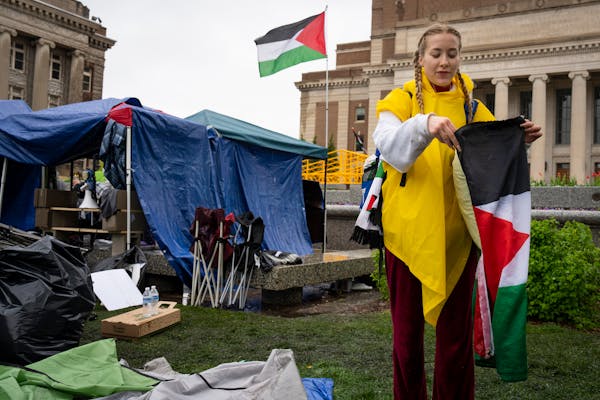The other Minnesota bridge collapse of 2007 -- the one that wiped away a railway bridge near Chaska -- may now be creating a major new scenic corridor for bikers and hikers in the southwest metro.
But it is also stranding a company with deep roots in the region's history: one that has supplied liquid sugar to generations of American cereal bowls.
Thanks in part to flooding on the Minnesota River, a bridge along a 5-mile spur line that long connected a historic sugar plant in Chaska to the outside world, crumbled in March.
Now, the railroad that owns the line is asking the federal government for permission to walk away from it. Union Pacific says it can't afford to rebuild the bridge and maintain the line just for one remaining client.
That, in turn, has led a coalition of government agencies to try to amass the resources it would take to turn the old railway line into something else.
The line would provide a scenic river-leaping link to create a huge loop for bikers and hikers in two fast-growing suburban counties -- Carver and Scott -- where there is now only a dead end.
"Suddenly, a regional trail that just stops now in Chaska would extend all the way into another county, with great views and vistas as it passed over the river," said Kevin Ringwald, planning director in Chaska. "People don't want to just stop at the end and retrace their path: They like big loops."
All the plans depend on the willingness of an obscure federal agency called the Surface Transportation Board to let Union Pacific walk away from the spur line. But that is likely to be approved, said Mark Davis, director of corporate relations and media for the railway.
"The line itself, with one customer, is marginal at best when it comes to supporting itself," he said. "Now, with the bridge replacement, it would be cost prohibitive."
The most likely opponent to its abandonment would be United Sugars Corp., the company that runs the plant. One of that company's three corporate owners is American Crystal Sugar in Moorhead, Minn., the nation's largest beet sugar manufacturer.
That company's spokesman, Jeff Schweitzer, declined to say whether the firm intends to fight the abandonment. It is making do today with trucks, he said, and is in discussions with the railway about what happens next.
In the meantime, the Metropolitan Council and the cities and counties closest to the line are teaming up, Ringwald said, in hopes of accomplishing together a project that "is probably too big for any one of us to deal with alone."
The line leads from Chaska to its fast-growing outlying neighbor, the city of Carver, and that link alone would be a big deal for the area, Ringwald said. And for Chaska itself, the potential exists for a 100-foot-wide corridor that now runs straight through town to become the site of new housing, with the trail shifted to one side.
The development raises questions as well about the corridor's potential use by light rail or other rail transit. But the Met Council document downplays that possibility, saying the new Hwy. 212 corridor is a likelier route for that.
If little is settled for the moment, Ringwald said, the possibilities are encouraging.
"I'm excited we've been able to pull this group together. Hopefully we'll keep the energy going."
David Peterson • 952-882-9023

Wolves vs. Nuggets series updates: Times for first four games set
Medical examiner identifies pedestrian hit by vehicle and killed in Bloomington
Souhan: A sausage? A knee surgery? Minnesota sports has gone mad

